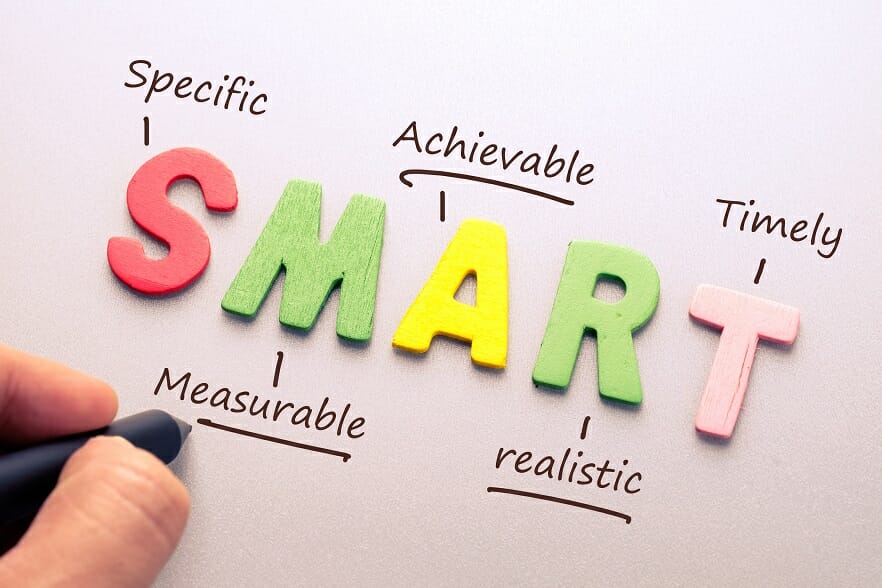Performance Benchmarking Explained In A Simple Way

How does your company compare to its competitors? What is the nature of your business? Better? Worse? You haven't a clue? I'm not talking about the bottom line. Processes, operations, time to market, and customer retention are all topics on my mind. Benchmarking compares your brand to best-in-class standards, allowing you to improve in all areas. Ensure that your business works smoothly and efficiently. Let's have a look at what we've got...
If you're looking for ways to improve your company operations over time, performance benchmarking is a useful tool. However, if you merely benchmark against yourself, you'll be wasting your time.
What is performance benchmarking?
First and foremost, you must define the operations that keep your business functioning efficiently. I mean each and every one of them. From your internal messaging tool to the time it takes for your product to reach market. Then compare them to other businesses and industry standards.
Let's get digging...
Benchmarking definition
Benchmarking is the practise of comparing a company's products, services, operations, and processes to those of other best-in-class companies or the wider marketplace. Cost per unit, time to create, product/service quality, effectiveness, time to market, customer satisfaction and loyalty, and brand awareness are some of the most prevalent benchmarking measures. Benchmarking against leading organisations will provide you with insights into how your brand compares to theirs, even if they're in a different industry or target a different consumer. Benchmarking is the process of acquiring a metric or a standard. Benchmarks are the "what," while benchmarking is the "how," to put it simply.
Why is benchmarking important?
This could entail improving a product feature to compete with or outperform a competitor's offering. Using a social media management tool to plan out your social media messaging. Introduce your employees to training days.
Benchmarking will benefit your company...
- Processes, operations, and procedures will all be improved.
- Determine how effective your previous performance was.
- Determine how your competitors do business.
- Increase efficiency while lowering running costs.
- Improve the quality of your product or service.
- Boost client loyalty and satisfaction.
Monitor performance
Examine current benchmark metrics to establish industry benchmarks that you should aim to meet or exceed. Benchmarking is a continuous process in which performance monitoring is critical.
Competitive analysis
You can uncover areas in your business that can be improved by comparing your performance to that of your competitors - what they're doing right and what they're doing badly. Getting a competitive advantage.
Goals
You've probably already decided on your business objectives, but benchmarking objectives are different. It's all about improving the efficiency of your company's processes. They're in a fight. However, they must be attainable, just like your business objectives.
They must be SMART - Specific, Measurable, Achievable, Relevant, and Timely - to be effective.

SMART goals - Specific, Measurable, Achievable, Relevant, Timely.
- Specific - real numbers, real deadlines - who, what, where, why?
- Achievable - are your goals challenging, yet possible?
- Measurable - how will you track and analyze your progress?
- Relevant - do you have the resources to achieve your goal?
- Timely - when do you intend to reach your goal?
Make your goals unrealistic, and you’re going to fail.
Benchmarking basics
Benchmarking is a method of determining how well your company's products, services, procedures, and operations operate. After then, the information gathered should be compared to an industry standard - a benchmark.
Benchmarks are exactly what they sound like. The how is benchmarking.
For example, your product takes one hour to make, requires one engineer, and costs $25.
Is that a good thing or a negative thing?
You can only give a correct answer to this question if you have data from other companies that make the same product as you. This benchmark shows that you should look into ways to speed up your manufacturing process if brand X makes its product in 30 minutes with one engineer and sells for $25.
It's all about making your organisation run more efficiently. Making it run as smoothly as possible. Ensure you aren't squandering your money. Taking control of a larger share of your market.
- Determine where other brands outperform you and how you might improve.
- Compare and contrast your procedures with those of your competitors.
- Analyze the information gathered and make changes to improve your processes, products, and operations.
Benchmarking classifications
Benchmarking can take many different shapes. I'll focus on the most important ones.
Internal benchmarking
Is it possible to make an internal process more efficient?
Collect statistics on your performance over time - days, weeks, months, etc. - or in different situations - such as a public relations issue, a product launch, or an event - and identify the weakest areas. Converting leads to customers, onboarding new team members, and other processes that might be improved.
Internal benchmarking has the advantages of having all of the data you need and being a faster procedure.
What's the drawback?
If you don't learn from high achievers outside your business/industry, you're limiting your progress.
Competitive benchmarking
What are the processes and activities of your competitors?
Unlike competitor analysis, which involves gathering information to show how their processes work in comparison to yours and attempting to gain a competitive advantage by jumping into areas that have been overlooked - new features, countries to target, and so on - competitive benchmarking entails gathering information to show how their processes work in comparison to yours. In addition, industry performance standards will be identified.
Compare and contrast items, services, processes, and procedures. You'll figure out where you fit in your industry and how to boost your productivity and success.
For example, how do customers feel about your competitor's brand - favourable, bad, or neutral? What do customers have to say in comments, reviews, and social media posts? Collect this information, and if it differs from your internal results, figure out how to enhance those parts of your company.
Strategic benchmarking
When you compare your performance to that of the best-in-class, you're doing strategic benchmarking. You shouldn't limit your data collection to your own industry. You'll be looking at brands that have performed well in a specific procedure.
This type of benchmarking will aid your company's overall success. It compares your long-term strategies to those of other companies. Strategic benchmarking suggests improvements, but they aren't quick fixes. You'll think about your key skills, new product development, and other things.
Performance benchmarking process
Benchmarking does not have to be a complicated task. I'll go over the key processes involved, which are applicable to any industry.
Benchmarking is both quantitative and qualitatively successful. You'll be comparing your company against competitors as well as businesses from other industries. It's a procedure that necessitates the cooperation of your entire organisation.
It isn't a simple repair. And it's not a trick of the light. You won't become IBM by updating your CRM software. However, it will encourage your organisation to change. You'll gather information that, if properly managed, will result in improvements.
Here's how to go about it...
The plan

SWOT analysis - Strengths, Weaknesses, Opportunities, Threats.
You'll need to enlist the help of upper management and be ready to commit time, labour, and money. You'll also need their help if you make any substantial adjustments as a result of your benchmarking, such as new product development, training, or tool purchases.
Choose processes that are critical to the success of your business. Those that give you an advantage in the market. They must be measurable so that the metrics to be compared can be determined.
Compare your company's strengths, weaknesses, opportunities, and threats to those of your competitors using a SWOT analysis.
Don't forget about the ripple effect. What impact will a change in one process have on other processes? It's not a good idea to fix one thing and break another. You must now select a benchmark against which to measure your results. It could come from a competitor or from a company in a different industry, country, or location, for example. However, make sure it's a top performer in the process you're evaluating/improving.
The collection of data
You'll be gathering information from a variety of sources. From the company you want to compare yourself to, as well as publicly available data such as websites, press releases, and publications. Consider market research, surveys, questionnaires, onsite/telephone interviews, and so on when conducting your research. You can also obtain data from online conversations, blogs, forums, and review sites using social media analytics. Consumer feedback on products, services, and processes, as well as consumer emotion about a brand.
Benchmarking example - customer service
A brand should compare its processes to those of its top competitors if it wants to improve customer service. The successful ones. Determine what they're doing that is effective. Determine how your company communicates with customers, whether it's online or in person. What is the language they are speaking? Do they provide clients with 'how to' videos?
Mystery consumers will be used by many offline companies, such as restaurants and bars, as part of their benchmarking process. Consider someone coming to a pub and ordering a drink and food. Checking for cleanliness, customer service, and upselling opportunities.
The analysis
Now that you've gathered all of the necessary information, it's time to examine it.
Your work will be aided by data visualisation tools. Images are far easier for people to comprehend than pages of numbers.

Quick Search - Showing share of countries for Coca-Cola & Pepsi.
So much easier to understand than an Excel spreadsheet!
Identify the weaknesses in your procedures that are letting you down when compared to the organisation you're benchmarking against. What's causing this chasm - a lack of staff, time, or the improper tools, for example?
How is it that brand X is able to get their product to market faster than you? How does brand X make their product for less money than you do?
Time to implement
You'll need to devise a strategy.
You've identified the holes and know how to close them. It'll likely entail significant adjustments, and you'll need the support of your superiors and team. Make sure you have the resources you'll need to make the changes.
You're on your way to a successful benchmarking procedure after you've put everything in place.
Benchmarking marketing
Benchmarking your marketing methods allows you to see if they're as effective as they could be. You should begin by reviewing your current activities. Keeping track of how often campaigns are run. Rates of engagement They produce results such as conversions, new customers, open rates, and so on.
You'll be able to make improvements and increase ROI once you've gathered all of your data.
The first step is to gather information. To benchmark your brand's marketing efforts, follow these steps...
-
Determine the marketing processes you want to measure
-
Choose your metrics
-
Competitor analysis
-
Build your digital marketing strategy
-
Regular analysis
Marketing benchmarks
You can use marketing benchmarks to compare your achievements to those of your competitors and industry. You'll figure out how to gain a competitive advantage. You'll figure out where you're falling short. You'll need data about your competition to benchmark your marketing efforts. Much of this information is available for free in the public domain. For example, financial reports and market research surveys. There are also research firms that supply benchmarking data for a fee. Then there's the issue of analytics software...
Benchmarks for marketing metrics include...
Top of mind awareness - TOMA
When a product category is named, the first brand, product, or service that comes to mind is. When customers are asked to name a premium car, the brand with the largest percentage of mentions (Rolls Royce, Ferrari, Bentley, Porsche, etc.) is at the top of their minds. Some brands have acquired such high levels of TOMA that their product has become a generic term.
Unprompted brand recall
When people recall a brand - or a product category - without it being specifically stated.
Brand recognition
Consumers recognise your logo, tagline, jingle, packaging, and advertisements above those of your competitors.
Reach & Engagement
The number of people that know about your brand and how they interact with it.
Conversion rate
The percentage of visitors to your website who finish a task.
Customer satisfaction & Loyalty
When compared to your competitors, this metric displays the percentage of customers that are satisfied with your brand, product, or service. This indicator reflects the likelihood of a customer purchasing a specific brand on a regular basis.
Customer perceptions
A customer's perception of your brand, products, and services. Every direct and indirect connection with your organisation shapes their view. Measurement is used to identify pain points and improve customer experience.
Product performance
The value that customers place on your items - new and improved. User-generated material can be collected and used to improve product development and marketing initiatives.
Market share
The proportion of overall industry sales in a product category attributable to your business.
Share of wallet - SOW
A metric that determines the percentage of a customer's spending on your brand vs your competitors.
Customer reviews
Customer feedback/ratings are posted on review sites, shopping sites, and other platforms.
Customer acquisition cost - CAC
How much does persuading customers to buy your product or service cost you? Market research, surveys, marketing, sponsored ads, publishing, TV commercials, and events are all examples of costs.
Customer lifetime value - CLV
The amount of money a customer is expected to spend in the future on your products and services. Based on their annual spending average.
Customer retention rate
A measure that allows businesses to determine the percentage of clients they keep vs the percentage they lose.
Pricing strategy
A continuous procedure for determining what customers are willing to pay for your items and keeping track of what your competitors are charging. Adjust your pricing plan as needed.
Benchmarking tools
The analysis had come to a conclusion. Metrics to be measured have been sorted. Choose the time period you'd like to track, such as the previous two to three months/Q1, and so on. Now is the moment to pull out your toolbox.
To have a deeper understanding. Benchmarking tools are required to acquire more detailed data...
-
Talkwalker | Performance benchmarking
-
Google Analytics | Monitor website traffic
-
Twitter Analytics | Simple, accurate, free
-
MailChimp | Email marketing
Conclusion
High-performance businesses seek out the procedures, operations, and products that are critical to their success. They compare their efficiency and efficacy to those of best-in-class companies. You can track the effectiveness of your efforts by benchmarking your marketing operations. This will result in a better marketing approach and more leads.



